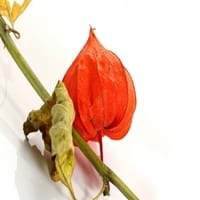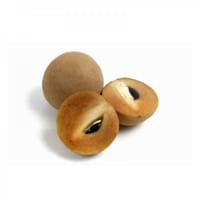Health Benefits
Anti-oxidant properties, Anti-inflammatory properties, Cancer prevention, Maintains healthy cholesterol level, Reduces blood circulation problems, Treatment of cough, fever & sore throat, Treatment of Hypertension
Anti-inflammatory properties, Arthritis treatment, Regulates Blood Sugar, Unknown
General Benefits
Treatment of asthma, Treatment of cataract, Treatment of hepatitis, Treatment of macular degeneration, Treatment of neurodegenerative diseases
Boosts immune system, Controls blood sugar levels, Digestive aid
Skin Benefits
Treatment of Rheumatism & Dermatitis, Treatment of Skin Inflammation
Nourishes skin, Protects skin from oxidative stress
Hair Benefits
Unknown
Prevents hair loss, Promotes longer and healthier hair, Regulates hair growth
Allergy Symptoms
NA
Asthma, Red rash, Swelling of mouth, tongue or lips
Side Effects
Hypertension, Ventricular Tachycardia
Diarrhoea, Vomiting
Best Time to Eat
As a snack in the late afternoon, Eat the fresh ones, avoid mixing with any other foods, don't eat after meal., Morning time (before lunch), Strictly avoid empty stomach
As a snack in the late afternoon
Vitamin B5 (Pantothenic Acid)
Not Available
Vitamin B6 (Pyridoxin)
Not Available
Vitamin B9 (Folic acid)
Not Available
Vitamin C (Ascorbic Acid)
Vitamin E (Tocopherole)
Not Available
Water Content
Not Available
Calories in Fresh Fruit with Peel
Calories in Fresh Fruit without Peel
Not Available
Not Available
Calories in Frozen Form
Not Available
Calories in Dried Form
Not Available
Calories in Canned Form
Not Available
Calories in Juice
Not Available
Calories in Jam
Not Available
Calories in Pie
Not Available
Type
Fruit vegetable
Berry
Season
Spring, Summer
Winter
Varieties
Physalis franchetii, Physalis pruinosa, Physalis peruviana, Physalis heterophylla and Physalis philadelphica
Bush Table Queen, Heirloom Table Queen, Festival Hybrid, Early Acorn Hybrid, Table Ace, Ebony and Cream of the Crop
Seedless Variety
No
Not Available
Color
Bright Yellow, Orange
Dark green, Green-yellow, Orange green
Inside Color
Orange
Not Available
Origin
Chile, Peru
Central America, North America, Unknown
Soil Type
NA
Well-drained
Climatic Conditions
NA
Cold, Sunny
Facts about
NA
- It was named as Acorn Squash for its resemblance to a large ribbed acorn.
- It is said that squash was being grown in Mexico as long as 10,000 years ago.
- It was the first food cultivated by native American Indians.
Cocktails
Yes
Not Available
Other Countries
NA
Egypt, India, Iran, Italy, Mexico, Russia, Turkey, Ukraine, United States of America
Top Importer
Netherlands
UAE
Top Exporter
Colombia
India
Botanical Name
Physalis Peruviana
Cucurbita Pepo
Synonym
Alkekengi, Herschellia & Pentaphitrum
Winter Squash
Subkingdom
Tracheobionta
Tracheobionta
Division
Magnoliophyta
Magnoliophyta
Class
Magnoliopsida
Magnoliopsida
Subclass
Asteridae
Dillenhidae
Order
Solanales
Cucurbitales
Family
Solanaceae
Cucurbitaceae
Generic Group
Not Available
Not Available
Difference Between Physalis and Sapota
We might think that Physalis and Sapota are similar with respect to nutritional value and health benefits. But the nutrient content of both fruits is different. Physalis and Sapota Facts such as their taste, shape, color, and size are also distinct. The difference between Physalis and Sapota is explained here.
The amount of calories in 100 gm of fresh Physalis and Sapota with peel is 77.00 kcal and 40.00 kcal and the amount of calories without peel is Not Available and Not Available respectively. Thus, Physalis and Sapota belong to High Calorie Fruits and Low Calorie Fruits category.These fruits might or might not differ with respect to their scientific classification. The order of Physalis and Sapota is Solanales and Cucurbitales respectively. Physalis belongs to Solanaceae family and Sapota belongs to Cucurbitaceae family. Physalis belongs to Physalis genus of Physalis species and Sapota belongs to Cucurbita genus of Pepo species. Beings plants, both fruits belong to Plantae Kingdom.









